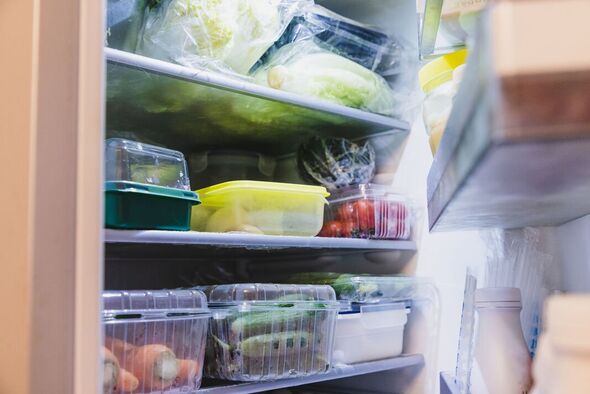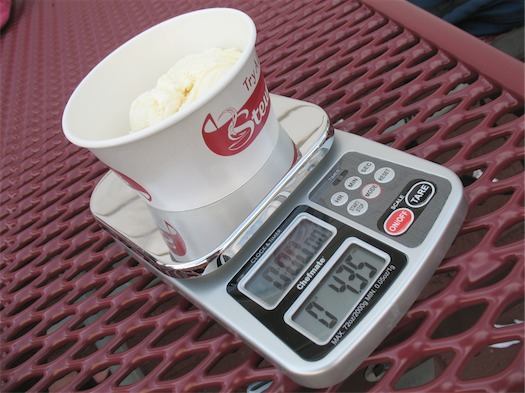How Do I Stop Condensation in My Fridge
The most effective way to stop condensation in your fridge is to keep the door closed as much as possible. If you open the door frequently, the cold air will escape and warm air will enter, causing condensation to form. Additionally, try to keep your fridge at a consistent temperature and avoid putting hot food directly into it.
If you notice that your fridge is already starting to form condensation, wipe it down with a clean cloth or sponge.
If you notice condensation building up in your fridge, there are a few things you can do to stop it. First, make sure that the door seals are tight and free of any gaps. If the seal is loose, replace it.
Secondly, keep the fridge clean and free of food debris. Wipe down the shelves and walls regularly with a mild cleaning solution. Finally, keep the fridge temperature set to between 35 and 40 degrees Fahrenheit.
By following these simple tips, you can prevent condensation from forming in your fridge.
Why is My Fridge Wet Inside
If you’ve ever found your fridge wet inside, you know it’s not a pleasant experience. But why does this happen? And more importantly, how can you fix it?
There are a few reasons why your fridge might be wet inside. One possibility is that the door seal isn’t tight enough, allowing cold air to escape and moisture to enter. Another possibility is that the defrost drain is clogged, causing water to build up and eventually leak out.
Finally, if your fridge has an automatic defrost cycle, it’s possible that the defrost timer isn’t working properly, causing the unit to frost over and drip water inside.
Fortunately, there are some easy solutions for each of these problems. For a loose door seal, simply clean the seal with soapy water and dry it thoroughly.
If the seal is damaged, you may need to replace it entirely. For a clogged defrost drain, clear any debris from the drain hole using a straightened paper clip or similar object. If the timer is the issue, consult your owner’s manual for instructions on how to reset it.
With just a little troubleshooting, you can figure out why your fridge is wet inside and take steps to fix the problem quickly and easily!
Fridge Moisture Absorber
If you live in a humid climate, you know how annoying it is to have a fridge full of moisture. The air inside your fridge is constantly being circulated and cooled, which causes the moisture to condense on the walls and shelves. This can lead to mold and mildew growth, and make your food spoil faster.
A fridge moisture absorber is a great way to combat this problem.
There are a few different types of moisture absorbers on the market. The most common type is silica gel packets, which can be placed in your fridge (and other places around your home) to absorb excess moisture.
Silica gel packets are non-toxic and won’t damage your food or appliances. You can find them online or at most hardware stores.
Another type of moisture absorber is calcium chloride pellets.
These are more commonly used in industrial settings, but can also be effective in the home. Calcium chloride absorbs moisture from the air by creating a chemical reaction that produces heat. This means that it can raise the temperature inside your fridge if there’s too much humidity, so be sure to monitor the pellets carefully if you go this route.
Whichever type of moisture absorber you choose, make sure to check it regularly and replace it when necessary. With a little help from a moisture absorber, you can keep your fridge free of humidity and mold!
Why is My Fridge Wet Inside at the Top
If your fridge is wet inside at the top, it could be because of a few different reasons. The most common reason is that the fridge is not properly sealed and moisture is getting in. Another possibility is that the defrost drain is clogged and water is building up inside.
If you have a self-defrosting fridge, this could also be the cause. In this case, you’ll need to clean out the drain to get rid of the water. Finally, if your fridge has an ice maker or water dispenser, there may be a leak in the line that’s causing water to drip into the fridge.
If you’re not sure what’s causing the problem, it’s best to call a repair person to take a look.
How to Remove Moisture from Fridge
If you’ve ever opened your fridge to find it full of condensation, you know how frustrating it can be. Not only does it make your food soggy, but it can also lead to mold and mildew growth. Thankfully, there are a few simple tricks you can use to remove moisture from your fridge and keep it running smoothly.
First, start by checking the seals on your fridge door. If they’re worn or damaged, they may be letting in excess moisture. Replace them if necessary.
Next, take a look at the temperature setting. Your fridge should be set between 35 and 40 degrees Fahrenheit. If it’s set too low, condensation will form more easily.
Too high, and your food will spoil more quickly. Find the perfect middle ground to help reduce moisture levels inside the fridge.
Finally, consider using a dehumidifier inside your fridge.
This will help absorb any excess moisture that’s present and prevent condensation from forming on surfaces like shelves and drawers. Just be sure to empty the dehumidifier regularly so that it doesn’t become overloaded and stop working effectively.
With these tips in mind, you can say goodbye to those pesky water droplets in your fridge!
Why is the Food in My Fridge Sweating
When warmer air enters your fridge, it meets the colder air inside and condensation forms. This is especially common in older fridges that don’t have a tight seal. The door gasket, which is the rubber seal around the edge of the door, can become cracked or worn over time, allowing warm air to seep in.
Condensation on food can make it soggy and less appetizing. Plus, water droplets on food can encourage the growth of mold and bacteria. If you notice your fridge sweating, check the gasket for cracks or wear and tear.
Replacing a worn out gasket is an easy fix that will help keep your food fresh and prevent wasted groceries.

Credit: www.thermoline.com.au
How Do I Get Rid of Condensation in My Refrigerator?
Condensation in your refrigerator is caused by high humidity and can be a result of several different things. If you notice condensation on the inside of your fridge, there are a few things you can do to get rid of it.
One way to reduce condensation is to keep the door of your fridge open for less time when you’re putting food in or taking it out.
This will help to keep the humid air from coming into contact with the cold surfaces inside the fridge. Another way to reduce condensation is to increase air circulation inside the fridge. You can do this by opening up vents or placing a fan near the fridge.
If you have excessive condensation, you may need to adjust the settings on your fridge. Check the owner’s manual for instructions on how to do this. In most cases, you’ll want to lower the temperature setting and/or increase the ventilation.
By making these adjustments, you should be able to reduce or eliminate condensation in your refrigerator.
Is Condensation in Fridge Bad?
Condensation on the inside of your fridge is perfectly normal. In fact, it’s one of the ways your fridge helps keep food fresh. That said, too much condensation can be a sign that something isn’t working properly with your fridge.
Condensation forms when warm, moist air hits a cold surface. The moisture in the air condenses into water droplets on the colder surface. In your fridge, this happens when warm air from outside the fridge enters and mixes with the cold air inside.
The amount of condensation you see inside your fridge depends on a few factors, including:
– The temperature difference between the inside and outside of your fridge
– The humidity level in your kitchen
– How often you open and close the door
If you notice an unusually high amount of condensation in your fridge, there are a few potential causes:
– Your kitchen is particularly humid: This can happen in hot weather or if you live near the ocean.
If this is the case, try running a dehumidifier in your kitchen to reduce the humidity levels.
– There’s something blocking the vents: Vents help circulate cool air throughout the fridge to prevent condensation buildup. If these vents are blocked by food or other objects, it can cause excessive condensation.
– The door seals are damaged: Damaged door seals allow warm air to enter and cold air to escape more easily, which can lead to increased condensation. Check that your door seals are intact and free of any holes or cracks.
Tips to Prevent Condensation in the Fridge
Conclusion
If you notice condensation in your fridge, there are a few things you can do to stop it. First, check the door seals and make sure they are tight. If they are loose, try tightening them or replacing them.
You can also try turning up the temperature of your fridge. If the condensation is still occurring, you may need to call a repairman to take a look at your fridge.







